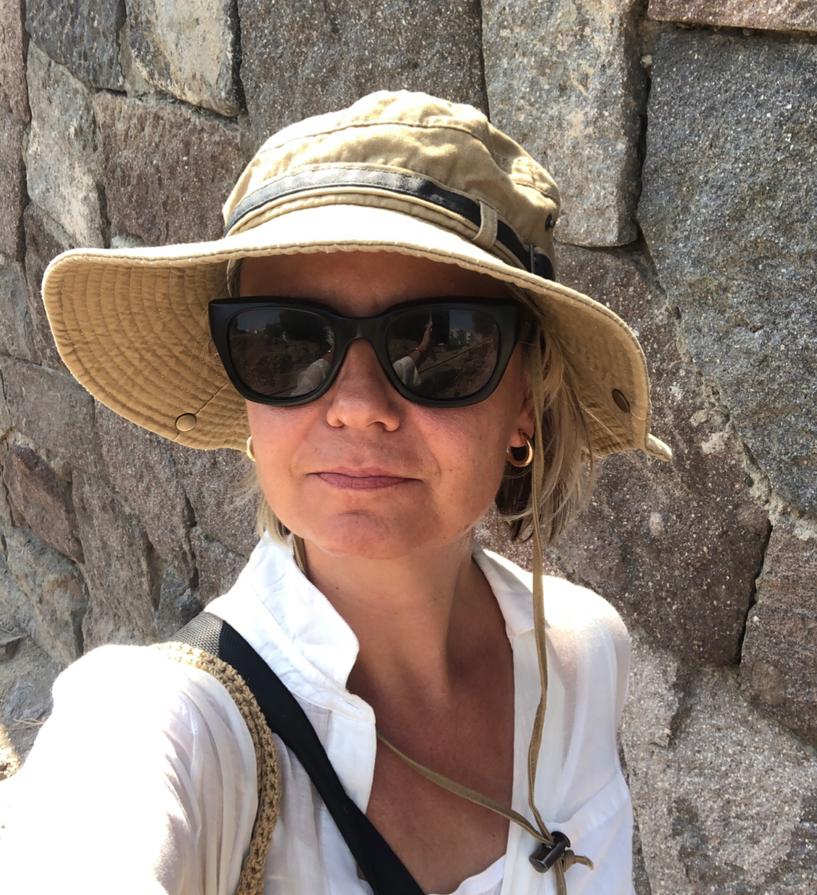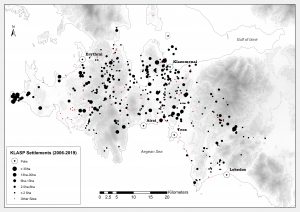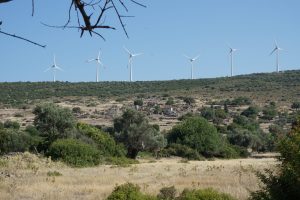
Dr. Koparal İstanbul, Mimar Sinan Güzel Sanatlar Üniversitesi Arkeoloji Bölümü’nde Doçent olarak görev yapmaktadır. Doktora derecesini “Urbanization Process and Spatial Organization in Klazomenian Khora from Early Iron Age to Roman Period” başlıklı tezi ile Orta Doğu Teknik Üniversitesi Yerleşim Arkeolojisi Programı’ndan aldıktan sonra TUBİTAK desteği ile Doktora Sonrası çalışmalarını University College London’da sürdürmüştür. Halihazırda Klazomenai Kazıları Başkan Yardımcısı ve Urla-Çeşme Yarımadası Arkeolojik Yüzey Araştırmaları proje başkanlığı görevlerini sürdürmektedir. Bilimsel çalışmaları peyzaj arkeolojisi, Ionia arkeolojisi ve toplumsal arkeolojiye odaklanmaktadır. Türkiye Teorik Arkeoloji Grubu’nun kurucularından biri olup TAG-Türkiye toplantılarını düzenlemiştir. 2016 yılında Newton bursu ile “Unlocking the Ionian Landscape: Historic Landscapes of Urla-Çeşme Peninsula” başlıklı projesini Newcastle Üniversitesi, Mc Cord Peyzaj araştırmaları Merkezi işbirliği ile gerçekleştirmiştir. ANAMED’de yürüteceği çalışmalar daha önceki çalışmalarının bir uzantısı olarak Ionia Bölgesi’ndeki arkeoloji pratiğinin politik bağlamını incelemek ve bunun yöntembilime etkisini kavramaya yöneliktir.
Research Title: Ionian Landscapes: Politics, Practice, and New Insights
Dr. Koparal is Associate Professor of Classical Archaeology at Mimar Sinan Fine Arts University, İstanbul. She received her PhD degree in the Settlement Archaeology Program at Middle East Technical University (METU), Ankara with her research on “Urbanization Process and Spatial Organization in Klazomenian Khora from Early Iron Age to Roman Period.” She conducted post-doctoral research at University College London for spatial analysis of archaeological survey data from her project on the Urla-Çeşme peninsula. She is the co-director of Klazomenai Excavations and the project director of archaeological surveys on the Urla-Çeşme peninsula. Dr. Koparal specializes in landscape archaeology, historiographies of archaeology in Ionia, and community archaeology. She is one of the founders of the Theoretical Archaeology Group in Türkiye and an organizer of TAG-Türkiye meetings. She received a Newton Award in 2016 and conducted the project entitled “Unlocking the Ionian Landscape: Historic Landscapes of Urla-Çeşme Peninsula” in collaboration with the McCord Center for Landscape, Newcastle University. Her current research focuses on the history of Ionian archaeology and its impact on archaeological methodologies and approaches.
Fellow’s End of the Academic Year Research Report:
Ionian Landscapes: Politics, Practice, and New Insights
Politics and practice
This year, I was fortunate to spend most of my time at ANAMED focusing on my project entitled “Ionian Landscapes: Politics, Practice and New Insights,” which is aimed at constructing a long-term perspective about archaeological practice in Ionia. This is not a study of historiography on Ionian archaeology but makes use of it for contextualizing the position of Ionian archaeology within the great archaeological traditions of the Aegean, Anatolian, and Near East. The major goal of the work is to bring a critical approach to the archaeological practice that has put excessive emphasis on post-Classical urban sites and monuments, in contrast with contemporary archaeological approaches that focus on rural landscapes, domestic spaces, paleo-environments, and hidden landscapes. Ionia, located at the center of the western coast of Anatolia, was peripheral to the Greek koine, but it was also the epicenter of events that shaped ancient Greek civilization. Although the term is not embraced anymore, Ionians used to be called the “Eastern Greeks” in previous scholarship, putting emphasis on their historical bond to mainland Greece. This perception was constructed upon the narrative of Ionian migrations that was mostly taken as a priori historical fact. The use of the term “Eastern Greek” has been avoided in Turkish scholarship as a result of “Anatolianism.” Reaching below the surface of monumental post-Classical towns and re-evaluating historical accounts and myths[i] reveals that perhaps the so-called migration was a political narrative refabricated by fifth century BCE Athenian imperialism. This shift of perception about the origin of Ionian communities is significant for the cultural identity of the region, where it has had an impact on research problems. Ionian archaeology is a contested legacy that is situated among different archaeo-political contexts, from Colonialism to Anatolianism.
First explorations
In the autumn of 1952, Freya Stark, an Anglo-Italian traveler, journeyed to Ionia and defined many sites, with her voyage, from a very personal perspective, including details of everyday life and culture.[ii] She travelled from Smyrna to Priene and explained what she saw at those places, along with the historical background of the region. She noted that at most places she visited, the remains of the ancient sites were buried in swamps, mostly in ruins within their well-preserved landscapes. She also remarked that she hardly saw people sightseeing at those places, like her, but instead only a few local shepherds or villagers. Reading her notes on Ionia gives an experiential feeling of what those places looked like seventy years ago. The same feeling emerges from the travelogues of the Ionian Expedition led by R. Chandler and N. Revett and from the watercolor paintings of W. Pars (Fig. 1). The history of research in the region dates back to the eighteenth century and owes very much to the Ionian Expedition. The Ionian Expedition, sponsored by the Society of Dilettanti, was the first systematic exploration of the region in 1764, and it had a significant impact on the reception of classical civilizations by European intelligentsia.

Fig. 1. William Pars, Ruins of the temple of Apollo at Didyma, from the northeast¸ October 1764. Donated by the Society of Dilettanti to the British Museum in 1799.
From the Ionian expedition to Freya Stark’s visit in 1952, it is remarkable that the remains of Ionian cities were amidst the wilderness or poor rural towns. Most of the ancient monuments were literally in swamps due to the geomorphology of the region, which is characterized by coastal changes and alluvial deposition. Pausanias’ vivid descriptions and Herodotus’ historical accounts stimulated very early interest in the region, and archaeological practice was mostly dedicated to the restoration of that well-known past. By the mid-nineteenth century, systematic excavations were initiated by British, French, German, and Austrian expeditions at places like Ephesos, Miletos, and Didyma, where the remnants of ancient settlements were monumental and highly visible. The first methodological investigations of Classical remains in Asia Minor began with the excursions of the members of the Society of Dilettanti in the mid-eighteenth century. The travelers of the society also published their records in Antiquities of Ionia from 1769–1840. The reports included the conclusions of the 2nd Dilettanti Expedition by Gell, Gandy, and Bedford to Greece and Asia Minor that took place in 1812–1813; and the third Ionian mission shortly thereafter, led by Pullan, was focused on the most monumental sites: Teos, Priene, and Smintheum. In Anatolia, Ionia was one of the first places chosen to be explored. However, by the early nineteenth century, the attention of travelers had already shifted to the eastern areas and southern coasts of Anatolia. These regions were relatively terra incognito, which possibly stimulated the enthusiasm of new travelers to discover the unknown. Charles Texier was one of those who extensively explored Asia Minor between 1833 and 1837 and published his work through reports and drawings, mostly about Lycia and Caria. Ionia was assumed to be a well-known place back in the nineteenth century. The first excavations were initiated at visually favorable sites like Ephesos, Miletos, Didymaion, and Priene. From 1870–1914, systematic excavations began at Ephesos (British: 1845, 1869–1874, 1904–1905; Austrian from 1898 onwards), Miletos and Didymaion (French: 1872–1873; German from 1899 onwards), and the neighboring great site of Pergamon (German from 1878 onwards). On the western coast of Anatolia, the only place where archaeological sequences were revealed beneath the robust remains of Hellenistic and Roman cities was Troy, which had been excavated between 1871 and 1890 by Schliemann.
The post-Classical urban sites with monuments and temples set the image for Ionia. Exceptionally well-preserved sites are most notable for the long-term excavations in the Great Tradition of classical archaeology that continued for more than several generations, with large budgets used for restoration projects. Foreign archaeological expeditions resumed due to the First and Second World Wars, and by that time, the Turkish Historical Society was founded to establish the importance of “native local Anatolian” cultures like the Hittites and to create a bond with the ancient past for the nascent Turkish Republic. In the “ancient Greek territory,” systematic excavations at Ephesos, Miletos, Didymaion, Priene, and Pergamon continued. British-Turkish excavations at Old Smyrna were initiated in 1948–1951 and then handed over to Turkish teams from 1966 onwards.
The long-term excavations in the Great Tradition of classical scholarship set the scientific agenda for archaeological practice in Ionia from the nineteenth century to today. This praxis of long-term excavation and the “big dig” tradition in the region largely invested effort in the restoration of post-Classical urban centers and temples.[iii] Ephesus, a pioneer in this type of “big dig” excavation, was followed by Magnesia, Didymaion, Klaros, Smyrna, Teos, Miletus, Priene, and Erythrae. At most places, the post-classical urban layout sealed the remains of earlier habitation, and the environs were generally not systematically explored. This is the major practical obstacle for a longue-durée approach to archaeological practice in Ionia. The research areas incompletely understood in Ionian archaeology are not only due to surface processes and heavy post-classical architectural layers but also to preferred research strategies. Our knowledge about the ordinary inhabitants of Ionian poleis on a daily and domestic basis are still missing at most places and are very fragmentary regarding local industrial production and agricultural economy.
Ionian archaeology has hardly been integrated with the rest of archaeological practice in the Aegean, where archaeological survey projects created a vibrant scientific environment in the 1970s. Due to the political divisions between the Greek and Turkish states, archaeological research rarely covered both sides of the Aegean, and Ionian archaeology has placed itself within the safe zone of the Great Tradition.
Hidden landscapes of Ionia
There are two major subjects left relatively incomplete in Ionian archaeology: early Ionia and rural landscapes. In recent years, the number of archaeological projects focusing on these issues has increased (Fig. 2). Urbanization, industrialization, and population growth are major threats for the preservation of the cultural landscape in the region and become great obstacles to the practice of archaeology outside of ancient urban cores (Fig. 3). The rural landscapes around Ionian settlements and pre-classical settlement layers have hardly been investigated. The focus of the archaeological practice is still mostly dedicated to material analysis—pottery (painted and well-preserved) and monumental architecture with a bauforschung approach, or urban planning (mostly post-classical). The persistence in the preference of research areas and methodologies inherited from the Great Tradition continues to produce monotype archaeological data. Restoration of well-preserved ancient towns mostly serves tourism but nothing else. Our knowledge of early Ionia and rural Ionia is still very scanty. Ionian communities were essentially people who were living simple lives by the coast within a cultivable plain: citizens, farmers, workers, artisans, and merchants. But they were also the pioneers of natural philosophy, settlement planning based upon isonomia, and overseas trade. Although Ionia has been subject to classical archaeology for more than a century, there is still much more to explore about Ionians and the people of Ionia by embracing new approaches and methodologies.

Fig. 2. Distribution of archaeological sites dated from the Late Neolithic to the Byzantine period recorded by field surveys between 2006 and 2019 around the Ionian poleis Erythrai, Klazomenai, Teos, Lebedos, and Airai; www.klasp.net (Map by the author).

Fig. 3. Abandoned village of Karaköy near Çeşme under the wind power plants (Photo by the author).
[i] Naoíse Mac Sweeney, Foundation Myths and Politics in Ancient Ionia. Cambridge Classical Studies (Cambridge, New York: Cambridge University Press, 2013).
[ii] Freya Stark, Ionia: A Quest (Harcourt: Brace and Company, 1954).
[iii] Alan M. Greaves, The Land of Ionia: Society and Economy in the Archaic Period (Chichester, West Sussex, U.K.: Wiley-Blackwell, 2010), http://www.123library.org/book_details/?id=28641.

